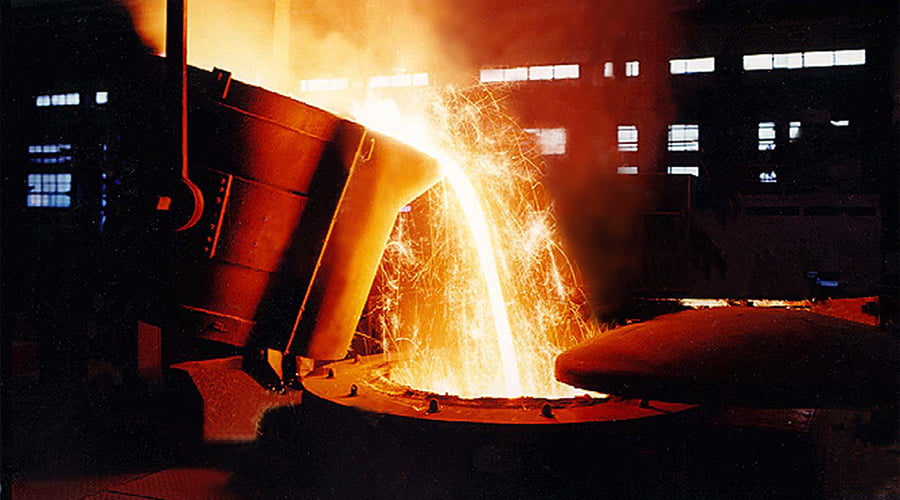Induction furnace heating principle is based on the concept of electromagnetic induction, a phenomenon discovered by Michael Faraday in the 19th century. This principle states that a current is induced in a conductor when it is exposed to a changing magnetic field. Induction furnaces use this principle to heat metal by creating a magnetic field that interacts with conductive materials.
Induction Furnace
How an induction furnace works involves three main components: a power source, a coil, and the metal being heated.
The power supply generates an alternating current (AC) that flows through the coil, which creates a magnetic field. Coils, often called induction coils or induction heaters, consist of a series of copper or aluminum tubes. These tubes are wound in a helical shape to form a coil that surrounds a crucible or vessel containing the metal to be heated.
When an alternating current is passed through the coil, a rapidly changing magnetic field is created. This magnetic field induces eddy currents in the conductive material inside the coil. These eddy currents flow in a circular pattern due to the alternating magnetic field, and their electrical resistance causes the material to heat up rapidly.
Advantages Of The Induction Furnace Heating Principle
The induction furnace heating principle offers several advantages over conventional heating methods.
a) Firstly, induction heating is very efficient because it heats the metal directly and does not require an intermediate heating medium such as gas or oil. This eliminates heat loss and enables faster heat-up times. Furthermore, induction heating is a clean and environmentally friendly process as it produces no harmful emissions or waste.
b) Induction furnaces also allow precise control of the heating process. By adjusting the frequency and power of the alternating current, the operator can regulate the temperature of the metal with great precision. This level of control allows for consistent and uniform heating, ensuring high-quality results during steelmaking.
c) The applications of induction furnace heating are wide and varied. These furnaces are commonly used in foundries and the metalworking industry to melt and cast various types of metals, including steel, iron, copper and aluminum. Induction heating is also used in processes requiring precise and localized heating, such as brazing, annealing and case hardening.
In conclusion, the induction furnace heating principle was a remarkable technological advancement that transformed the field of metal processing. By harnessing the power of electromagnetic induction, these furnaces provide efficient, precise and environmentally friendly heating solutions for a wide range of applications.
As technology continues to develop, we can expect further advancements in the field of induction furnace heating, expanding their capabilities and improving their performance in the metalworking industry.

